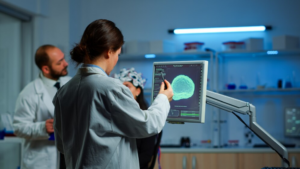
Age disease, commonly known as age-related disease, includes conditions that develop as the body gets older. These diseases range from physical conditions like heart disease and arthritis to cognitive ones like Alzheimer’s. Aging brings changes that make the body more vulnerable to certain health problems. These diseases affect many people worldwide and have a major impact on health, quality of life, and medical needs. Understanding age disease allows individuals to take steps for healthier aging and prepares society to address the needs of an aging population.
The Nature of Age Disease
Age disease is not a single condition. Instead, it represents a group of diseases linked to the aging process. As we age, our bodies change at the cellular level, which may increase disease risk. These changes often result in weakened immune responses, slower healing, and a decline in energy. Cells experience stress over time, affecting DNA and resulting in cell damage. This damage contributes to diseases that become more common with age.
Common Types of Age-Related Diseases
Several types of diseases become more common as people grow older. These include cardiovascular disease, arthritis, osteoporosis, Alzheimer’s disease, and diabetes. Each condition brings specific challenges, but all are connected to the aging process.
- Cardiovascular Disease
Cardiovascular disease includes conditions affecting the heart and blood vessels. These conditions, like heart attacks and strokes, are often linked to age due to changes in blood vessels and the heart muscle. - Arthritis
Arthritis affects joints and can lead to pain, stiffness, and reduced mobility. Osteoarthritis, the most common form, results from wear and tear on joints over time. - Osteoporosis
Osteoporosis weakens bones, increasing the risk of fractures. Bone density decreases with age, making bones more fragile. - Alzheimer’s Disease
Alzheimer’s disease affects memory and cognitive function. It develops over time and is more common among older adults. - Diabetes
Type 2 diabetes becomes more likely with age. The body’s ability to manage blood sugar declines, leading to high blood sugar levels.
Each disease has distinct symptoms and treatment needs. Addressing these diseases requires awareness, early diagnosis, and appropriate care.
Why Age Disease Occurs
Age disease arises from multiple factors, including genetics, lifestyle, and environmental exposure. Genetics plays a role, as some people inherit genes that make them more likely to develop certain conditions. Lifestyle choices, such as diet, exercise, and smoking, also affect disease risk. Environmental factors, like exposure to toxins, can cause cellular damage, which contributes to aging. These combined factors cause the gradual breakdown of bodily functions over time, increasing disease susceptibility.
How Aging Affects the Body
Aging changes the body in many ways. Skin loses elasticity, muscles weaken, and bones become more brittle. The immune system also weakens, making it harder to fight infections. These physical changes create the conditions for diseases to develop. Organs like the heart and kidneys may function less efficiently, increasing health risks. Cells accumulate damage, which leads to inflammation and tissue breakdown. This process explains why older adults often face more health challenges than younger individuals.
Managing Age Disease
Managing age disease requires a combination of medical care, lifestyle changes, and preventive actions. Regular check-ups allow early detection and treatment, which can improve quality of life. Lifestyle adjustments, such as maintaining a healthy diet, exercising regularly, and avoiding smoking, can reduce disease risk. Medications and therapies help manage symptoms and slow disease progression. Managing age disease also involves mental health support, as many people face emotional challenges related to aging.
- Regular Health Screenings
Screenings help identify health issues early. Early diagnosis allows prompt treatment and reduces complications. - Healthy Diet and Exercise
A balanced diet and regular physical activity promote physical and mental health. Exercise strengthens muscles, improves balance, and reduces disease risk. - Mental Health Care
Mental health care supports emotional well-being. Older adults may face anxiety or depression, so managing mental health is essential. - Medications and Therapies
Medications treat symptoms and slow disease progression. Therapy, such as physical or occupational therapy, can also improve mobility and independence.
The Role of Inflammation in Age Disease
Inflammation plays a significant role in age disease. Low-level chronic inflammation, called “inflammaging,” affects tissues and organs over time. This inflammation results from the body’s response to cellular stress and damage. Chronic inflammation damages cells and increases the risk of conditions like arthritis, heart disease, and Alzheimer’s. Controlling inflammation can reduce age-related disease risk. Anti-inflammatory diets, regular exercise, and stress reduction are effective strategies for managing inflammation.
Preventing Age Disease
Preventing age disease focuses on maintaining a healthy lifestyle and staying active. A diet rich in fruits, vegetables, whole grains, and lean protein provides essential nutrients. Regular exercise strengthens the body, keeping bones and muscles strong. Avoiding smoking and limiting alcohol can lower disease risk. Sleep and stress management also play a role in preventing age-related diseases. Many people use tools like an Age Calculator to assess biological age and measure health improvements. This helps in setting health goals and tracking progress over time.
- Healthy Diet
A nutrient-rich diet supports physical and mental health. Vitamins, minerals, and antioxidants help protect cells from damage. - Regular Physical Activity
Exercise improves heart health, strengthens muscles, and reduces stress. Physical activity is key to maintaining independence. - Avoiding Harmful Habits
Smoking and excessive alcohol consumption harm the body. Avoiding these habits lowers the risk of diseases like cancer and liver disease. - Adequate Sleep and Stress Management
Quality sleep and stress management support immune function and overall health. They reduce inflammation and promote mental well-being.
How Technology Assists in Age Disease Management
Technology offers new ways to manage and prevent age disease. Devices like fitness trackers monitor physical activity, heart rate, and sleep, providing valuable health insights. Many older adults use telemedicine to access healthcare without travel, which simplifies disease management. Apps and online tools offer reminders for medication, exercise, and diet tracking. Age Calculators estimate biological age, encouraging people to make lifestyle changes for better health. Technology makes it easier to monitor health and take preventive actions.
The Importance of Early Detection
Early detection of age disease is essential for effective treatment. Regular screenings identify potential health issues before symptoms appear. Many age-related diseases progress slowly, so catching them early increases treatment options. For example, early detection of osteoporosis allows preventive measures to protect bones, while early Alzheimer’s treatment can slow cognitive decline. A proactive approach leads to better outcomes, reduces healthcare costs, and improves quality of life.
Social Impact of Age Disease
Age disease affects not only individuals but also society. The rising number of age-related diseases places pressure on healthcare systems. An aging population increases the demand for medical services, long-term care, and financial support. Addressing age disease requires public health initiatives, caregiver support, and policies that help manage healthcare costs. Raising awareness about age disease encourages preventive actions, promoting healthier communities. Understanding the social impact of age disease highlights the need for supportive resources for older adults.
Personal Responsibility in Managing Age Disease
Each person has a role in managing age disease through lifestyle choices. Healthy habits support physical and mental well-being, which reduces disease risk. Family and friends can offer encouragement, creating a supportive environment. Education about age disease helps people understand how to care for themselves and loved ones. By taking responsibility for health, people can enjoy better outcomes and improve their quality of life as they age.
Conclusion:
Age disease represents the physical and mental challenges that often accompany aging. From heart disease to Alzheimer’s, these conditions affect millions of people worldwide. Understanding age disease allows individuals to take steps for prevention, early detection, and effective management. Maintaining a healthy lifestyle, managing inflammation, and using technology like an Age Calculator can help monitor health and improve outcomes. Society’s support for age-related diseases strengthens healthcare and quality of life. Taking a proactive approach to age disease benefits both individuals and communities, making it easier for people to age healthfully.






